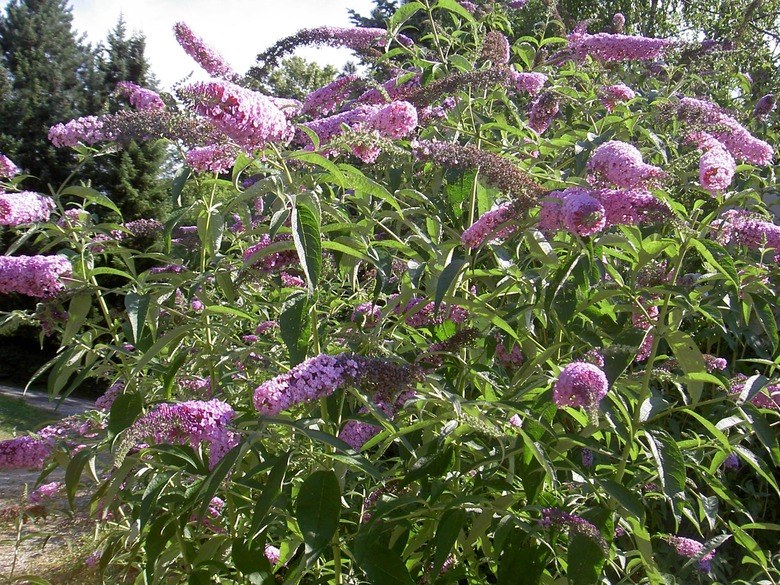How To Prune Back A Butterfly Bush In Zone 8
If your fast-growing butterfly bush has become a menace in your garden, usurping sun and space from other plants or developing ungainly or unshapely growth, it's time for rejuvenation.
Fortunately, the butterfly bush (Buddleia, USDA zones 5 to 9) takes to hard pruning like a duck to water.
If you're gardening in USDA zone 8, **the best time to prune back a butterfly bush is in late winter but before the bush puts on new growth in spring.** Later in the season, after it flowers, this bush can benefit from minor pruning to shape it and to deadhead its spent blooms.
Warning
The butterfly bush has naturalized in many parts of the U.S., and several states now consider it invasive or even prohibit its sale and planting. Consult your local county extension office regarding any regulations in your area. If its cultivation is discouraged or unlawful, remove the shrub and replace it rather than rejuvenate it.
Butterfly Bush Pruning for Rejuvenation
With their purple cone-shaped flower clusters and luscious, honey-like fragrance, butterfly bushes are summer flowering shrubs that bloom on new wood that appears during the current growing season.
A major pruning performed after the new growth has appeared will forfeit flowers.
**A butterfly bush can be cut within inches of the ground and will recover with healthy, new growth.** In late winter to early spring, usually February to March in zone 8, remove all branches to a height of 12 inches. Make the cuts at a 45° angle sloping down, so the water runs off the cut rather than penetrates into the wood. If any canes are dead or dying, remove them all the way to the ground.
The bush will produce new branches, often reaching 6 feet or more by the end of the season. Blooms begin in about June and may continue until the first frost.
Tip
Perform a major pruning of butterfly bushes only in late winter or spring before new growth appears.
Deadheading to Encourage More Blooms
The natural cycle of plants is to produce blooms, followed by seeds. Once the seeds have been produced, the plant has fulfilled its primary mission of procreating, at which point it is less interested in blooming further. This is, of course, counter to your wish to enjoy the bush's blooms for as long as possible.
To stack the deck in your favor, deadhead spent blooms to encourage the bush to continue flowering throughout the entire growing season. Deadheading means snipping off the dead flowers to prevent the production of seeds. This process also makes the plant look more attractive and prevents the spread of unwanted seedlings in your garden.
Tip
Avoid shearing your butterfly bush, meaning to cut it using shears in the same way you might cut a hedge. This loses its natural shape and doesn't result in new growth from the base, which is needed if the bush is to bloom.
Shaping Your Butterfly Bush
During the growing season, your butterfly bush may throw out long canes that extend beyond most of the other branches or steal space and sun from nearby plants. A butterfly bush can also become a thicket of crisscrossed branches that block sunlight to parts of the plant.
Grab your pruning shears once again and remove some canes to allow sunlight into the shrub, which will result in more flowers throughout the bush.
To shape the bush, prune off overly long canes or those growing in an undesirable direction to a side bud or branch that is growing in the direction you want. For example, if you want a taller, more slender form, retain inward-growing buds; if your goal is a more rounded, wider shape, retain outward-growing buds.
